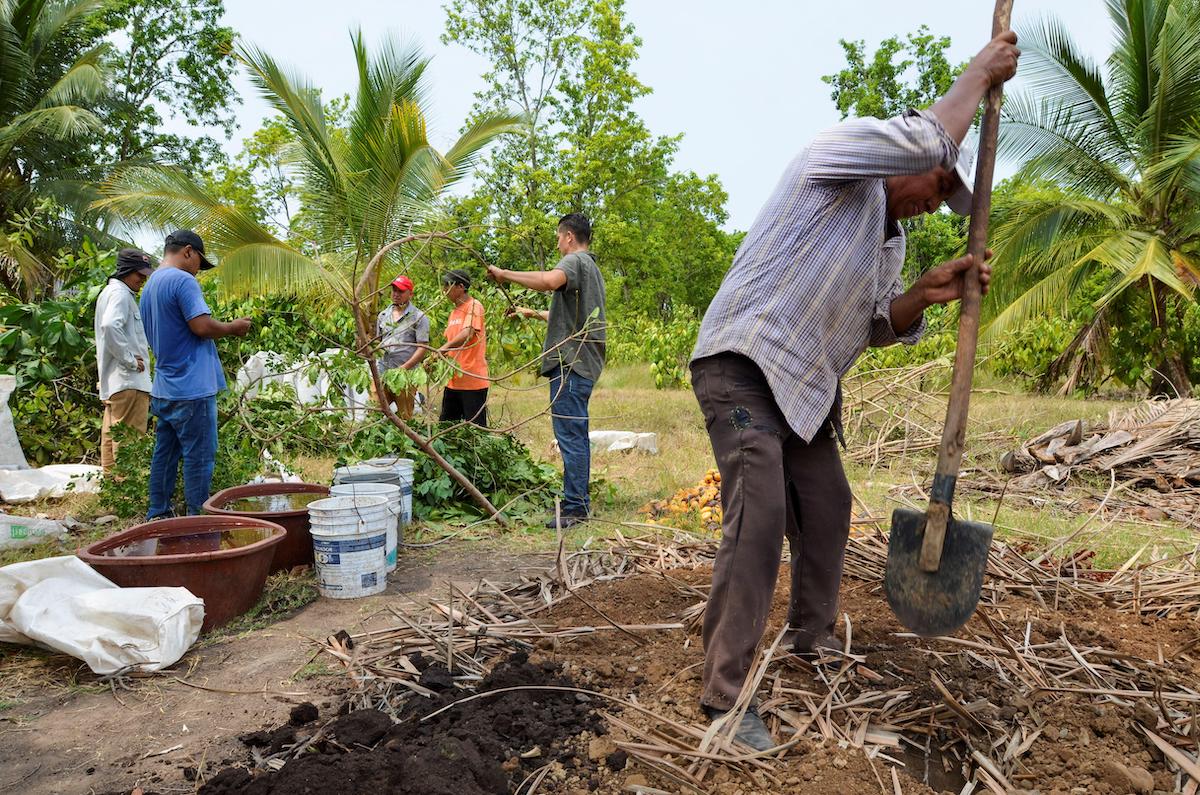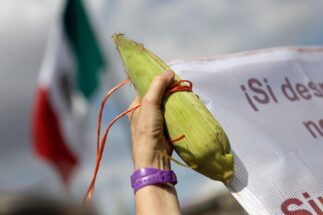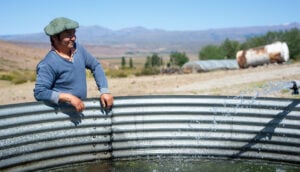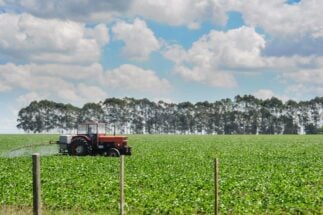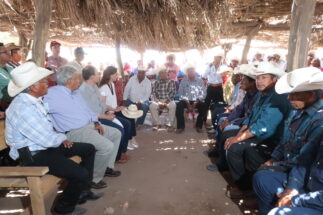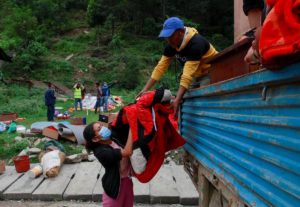On her plot in a rural village in Francisco Morazán department, central Honduras, Blanca Barahona grows corn, beans and vegetables for her own consumption. She is 52 years old and since last December has been a beneficiary of Sembrando Vida, a programme that supports farmers in El Salvador, Honduras and Guatemala, with a monthly payment of US$250 to smallholders to plant on 2.5 hectares under the programme’s guidelines.
“I really like farming. We eat what the land gives us, we prepare the tortillas in the morning, we cook the corn, the beans and squashes that we harvest,” says Blanca Barahona.
Sembrando Vida
Launched in 2019 as a signature policy of President Andrés Manuel López Obrador, Sembrando Vida (“Sowing life”) offers monthly payments to small-scale farmers to pursue agroforestry approaches, targeting both poverty alleviation and environmental sustainability.
Since mid-2019, more than 10,000 Central American farmers like Blanca Barahona have received economic support from Sembrando Vida (“sowing life”, in English) in exchange for cultivating milpa corn and bean fields alongside fruit and timber trees, within an agroforestry system that seeks to contribute to the health of the surrounding environment.
Sembrando Vida began in 2019 in Mexico, as part of the social policy of President Andrés Manuel López Obrador, better known as AMLO, to address rural poverty and environmental degradation in 20 Mexican states. In Central America, it is implemented and financed by the Mexican government through the Mexican Agency for International Development Cooperation (AMEXCID).
Last December saw the announcement of Sembrando Oportunidades, a bilateral cooperation framework with the United States Agency for International Development (USAID), pitched as a strategy to stop the flow of migration from Central America. In recent years, an average of over 400,000 people have left El Salvador, Honduras and Guatemala annually, mostly heading north towards Mexico and the US, driven by various problems related to insecurity, inequality, poverty, climate change and the Covid-19 pandemic.
“This programme has been the first from which we have received financial aid, since farmers do not have support from our government. Before, there was a national bank for agricultural development, but they removed it,” says Blanca Barahona.
For Barahona and the beneficiaries of Central America, Sembrando Vida represents a great help, with monthly payments allowing them to buy seeds and fence their plots, as well as contributing towards training programmes and the installation of factories that produce biological herbicides and fungicides.
One target of Sembrando Vida is to reduce deforestation and promote food security, while also seeking to reduce migratory flows from Central America to the US and Mexico through the generation of local jobs. However, back in Mexico the programme is facing questions due to a lack of transparency on how the fulfilment of these goals is being measured.
Targeting migration in Central America
Three years ago, Blanca Barahona tried to cross into the US at the Tamaulipas border in northeastern Mexico, as she recalls: “Several migrants were going with the help of a coyote [someone who helps smuggle migrants]. I took a risk [by not making the crossing] because they told us that there were criminal groups nearby and we couldn’t cross. I returned to Honduras and did not want to go back. Now that I am in this programme I have felt motivated, and I say: why am I going to leave if I have this help here?”
Barahona believes that Sembrando Vida has already made a difference in her country. Previously, she says, there were no opportunities for young people or adults, nor for the countryside, and now they can buy what they need: seeds and fertilisers. “It is a very good help. I am very grateful to the Mexican authorities for remembering Honduras, because we are a poor country,” she adds.
But it is not all rosy for the programme so far. Barahona and other beneficiaries are currently concerned that they have not received the latest payments from the programme. Nor has anyone offered them any explanation, for which she demands support from local and Mexican authorities.
We do not know how it has been proven that the programme is working in Mexico. How are we going to control what is being done in Guatemala, Honduras or El Salvador?
Questions are also emerging on Sembrando Vida’s claims and calculations around its impact on migration. According to official reports from the Mexican government, following the first phase of the programme, the intention to migrate among Salvadorans (10,000 beneficiaries) decreased from 55% to 0.6%. But in reporting this remarkable figure, no indication was given as to how this count of Central Americans deciding against migrating thanks to Sembrando Vida was carried out.
A lack of transparency in regards to Sembrando Vida’s migration and job creation claims has also been noted by Sergio Prieto, a researcher in migration and cross-border processes at Colegio de la Frontera Sur, a research centre in southern Mexico. In some parts of the country, temporary job schemes for migrants have been launched under Sembrando Vida. Prieto says he has made several requests to federal agencies to find out how many migrants have been employed as labourers or assistants as part of this, but he has not received a response. “So far, we do not know how it has been proven that the programme is working in Mexico. How are we going to control what is being done in Guatemala, Honduras or El Salvador?”, asks the researcher.
Diálogo Chino requested interviews with programme officials at AMEXCID to enquire about methodologies used to measure results, but were informed it was not possible as officials were attending the Summit of the Americas, held 6-10 June in Los Angeles, California – an event where migration was a central issue for the US hosts.
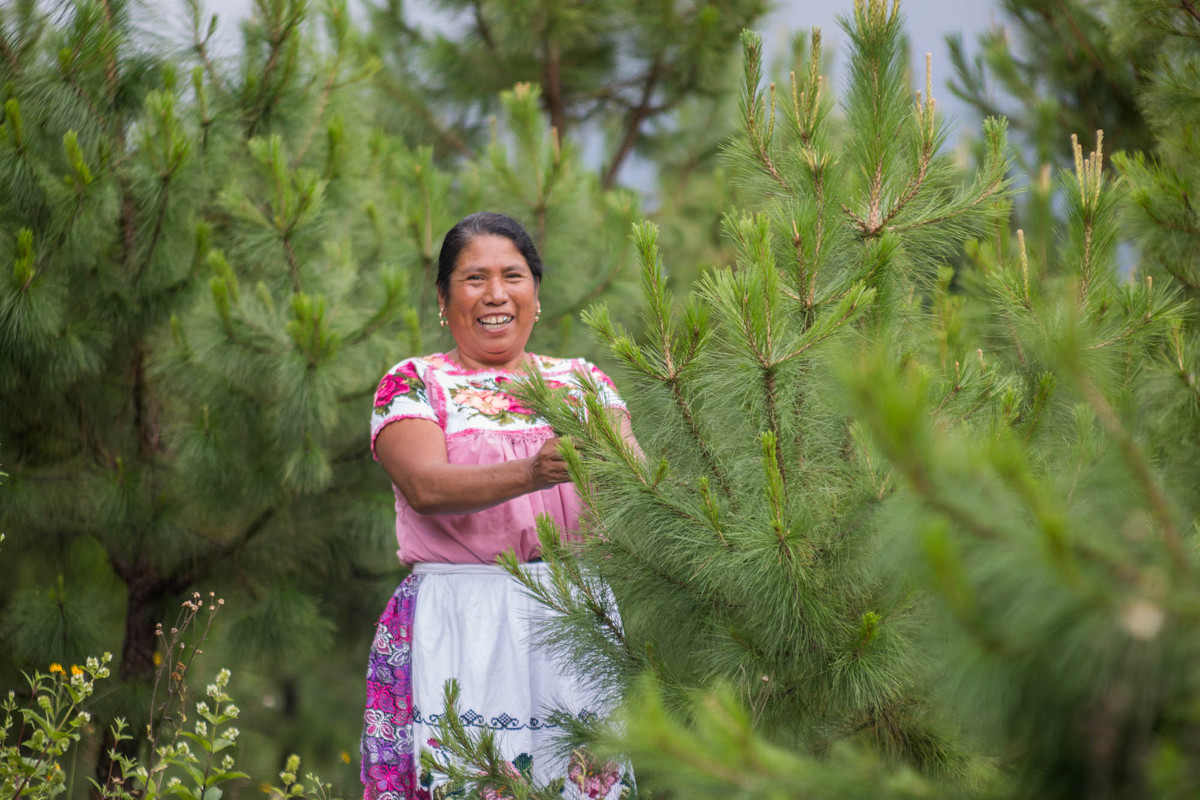
In 2019, prior to Sembrando Vida’s implementation, 86,000 Central American migrants were turned away by Mexican authorities on the southern border, according to an annual government migration report.
Honduras, Blanca Barahona’s home, was the origin of most of these returnees, with 43,000 unsuccessful crossings, while 31,000 came from Guatemala and 12,000 from El Salvador. The report notes that migration is due to economic reasons, as well as violence and insecurity that prevails in those countries.
Sergio Prieto has studied the causes and circumstances of migratory flows in southern Mexico. He explains that Mexico has cemented itself as the largest migratory corridor in the world since the ideological conflicts between the neoliberal and communist models of the 1970s and 1980s, being crossed by Central American and Caribbean populations. And recently, he explains, migrants from some countries in South America, Sub-Saharan Africa and even refugees from Ukraine have tried to cross Mexico into the United States.
“All of them are the most affected by the economic, political and social policies implemented by US interests in the territory, and by the internal inequality of their countries, where a small part of the population is very rich and the majority is highly impoverished,” Prieto says of Central America. These conditions, he says, have led to the idea that they are countries in which people are “born to migrate”, since the opportunity for survival is found abroad.
Given that migration is a complex and constantly changing phenomenon, it is very difficult for a single programme to affect the modification of these processes, warns Prieto. In addition, the context of the countries must be considered, where the dynamics of corruption and insecurity can prevent aid reaching farmers directly.
The environmental impact of Sembrando Vida
On her plot, Blanca Barahona not only plants vegetables, she also grows Gliricidia sepium, a tree species known as madreado in Honduras, and native to Central America. She explains that these leafy trees are planted on the edges of plots, and used for cattle feed and as a “fertiliser”, given its nitrogen-fixing qualities that boost soils. She reports that when representatives from Mexican authorities visited Honduras, they told locals that the programme was about reforesting their plots with fruit trees and planting their own food.
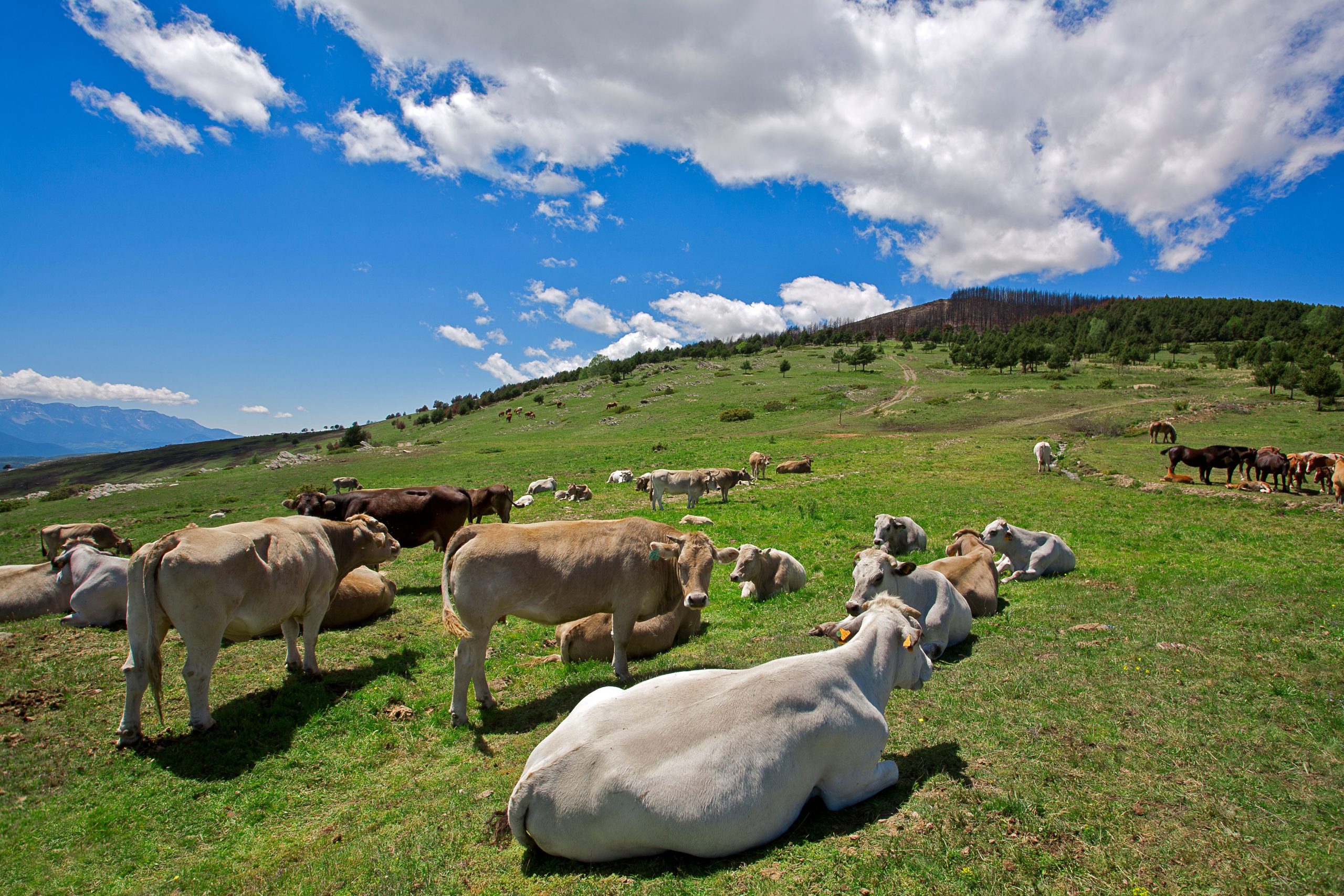
The cultivation of milpa – a traditional cropping system, normally based around corn and beans, and which sees fields left fallow after several cycles of cultivation – alongside timber and fruit trees is part of the agroforestry system promoted by Sembrando Vida in both Mexican and Central American fields. By intercropping crops – in space and time – this system promotes higher organic content and soil erosion control, in accordance with the “Operating Rules” of Sembrando Vida in Mexico, where 400,000 farmers in 20 states currently benefit from the programme. In this way, the project seeks to contribute to feeding rural communities but also to the recovery of soils and the improvement of the environment.
But this final aspect has been questioned by environmental organisations, due to the deforestation that the programme’s incentives could potentially stimulate on Mexican land. In early 2021, the World Resources Institute (WRI) published a study comparing the loss of forest cover at the municipal level in 2019 against the previous five years, in areas where the programme was implemented. Based on satellite information from its Global Forest Watch monitoring system, they found a loss of forest cover of 72,830 hectares, which would represent 11.25% of the total plots that received funding in 2019.
As WRI clarified, the estimate is not conclusive due to the lack of access to information on and coordinates of the plots, but the investigation served to propose to the country’s authorities a set of environmental indicators that could be used to measure the changes in forest cover, carbon sequestration, soil recovery and biodiversity that could be obtained with the programme.
If it is presumed that Sembrando Vida has positive environmental impacts, they must be measured and be clear about it
Although these were not ultimately considered for use in Sembrando Vida in Mexico, they are available to be used in any place where the programme is implemented, even in Central America where there is limited information on the plots, says Javier Warman, director of forests for WRI Mexico.
In any case, however they choose to do so, Sembrando Vida’s advocates must do more to effectively demonstrate the programme’s purported benefits. “If it is presumed that [Sembrando Vida] has positive environmental impacts, they must be measured and be clear about it,” Warmans emphasises.
“The programme could have social and environmental benefits if they provide environmental indicators, and especially if the plots where it is implemented are degraded and the perverse incentive to pull up to plant is not generated.”
